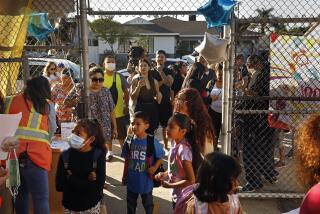Inequities of pandemic learning on stark display at the Orange County-Long Beach border
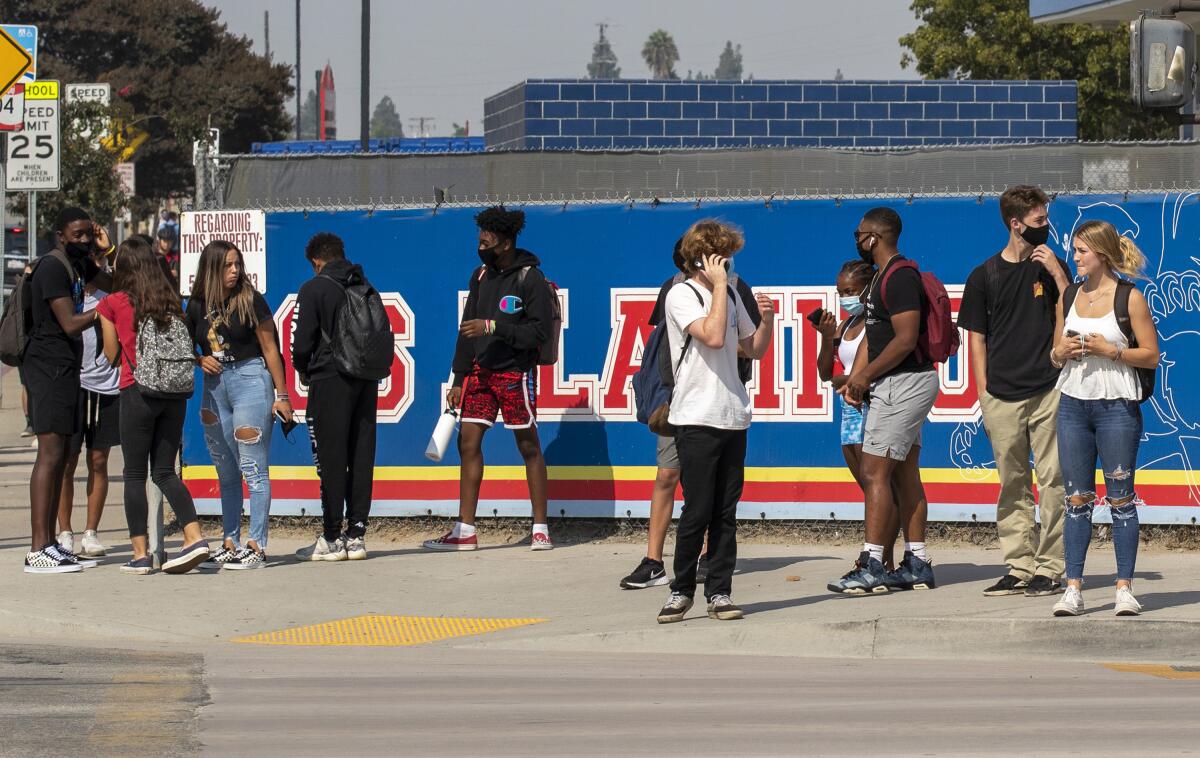
- Share via
To understand the inequities of student education in this fall of pandemic, few places offer a starker lesson than the Orange County border that divides working-class Long Beach and the upscale suburb of Los Alamitos.
On a recent weekday, Mitchell Cruz, a junior at Los Alamitos High School, woke to the sound of his 7 a.m. alarm and picked out a school-approved outfit instead of the simple T-shirts he wore for learning in front of a laptop computer at home.
In-person school was back in session — even if it was a little weird.
The 17-year-old wouldn’t actually head to the campus until 11 a.m. to make it to classes that would stretch into the afternoon. The buzz of hallway chatter was muted, students largely kept their distance from one another. Hangout spots were still a thing of the not-so-distant — even if it felt that way — past.
“People are still a little weary of the pandemic. It’s awkward,” Mitchell said.
Still, he and his parents were relieved that he was physically back at school under a four-day “hybrid” model.
“For my son, it was difficult at first when we switched to online learning. I tried to help, but it was hard to figure it all out,” said Mitchell’s mother, Kara Cruz. “So I was thankful for him to be back.”

The experience this day was radically different on the other side of the border in Long Beach. Mike Gallo, 43, told his three children — seventh-grader Karly, third-grader Keira and first-grader Evan — to abruptly log off at 9:30 a.m. from their virtual classes. Today’s lesson would be one of civil disobedience.
In this Long Beach neighborhood, some fed-up parents were protesting the delaying of in-person schooling to Jan. 28. The Gallos were joining in to boycott remote learning and all of the stresses and angst that come from it. They headed to Cubberley School for a brief sit-in.
“We need our kiddos back in class as soon as possible,” Mike Gallo said. “I don’t understand why we can’t get the option to put our kids in front of a teacher if we mask up.”
This is the dual reality of school life in neighborhoods smack dab at the border of Orange and Los Angeles counties.
“It’s frustrating. Across the [San Gabriel] river, students are already back, getting quality education, as my kids fall behind,” said Gallo, a salesman at Southern Glazer’s Wine and Spirits. “It’s like you’re in a different world when you cross into Orange County…. We can dine in, students can go to school, and yet we can’t do that in Long Beach even though it also has low COVID-19 rates.”
In neighborhoods divided by governmental boundaries but that to the naked eye often seem contiguous, different academic experiences are playing out — for students, parents, teachers and everyone else involved in the process of teaching and learning.
The Gallos have neighbors whose children attend schools in the Los Alamitos Unified School District in Orange County. Families who share backyards and whose children play together are experiencing schooling in the age of the coronavirus in dramatically different ways.
It is a microcosm of the California experience, where counties have responded differently at times to state guidelines — sometimes out of defiance and sometimes because of the varying infection rates from one jurisdiction to another.
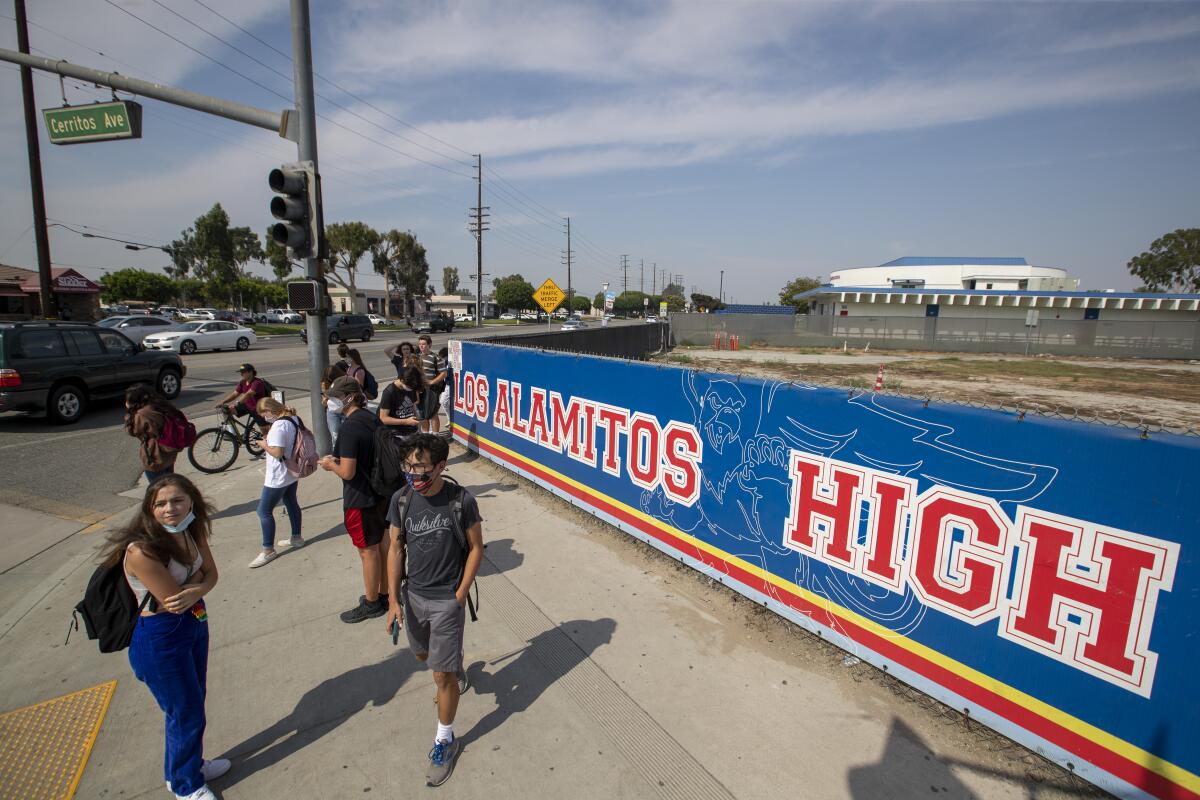
In Orange County, local leaders pushed for reopening and defying mask mandates. County school districts were among the first, and largest, in the state to resume in-person learning in September.
Meanwhile, students have yet to return to campuses in the Los Angeles and Long Beach unified school districts.
Long Beach’s decision to push back the start date was made after consulting local and regional health officials, Long Beach Unified spokesman Chris Eftychiou said in a statement.
“The health data in Long Beach have stabilized somewhat but still present significant challenges to returning students to in-person learning,” he said. “We believe that not perpetuating a cycle of opening and closing classrooms and schools will best contribute to stabilizing the learning experience for our students, and will allow parents to plan for the coming weeks and months.”
According to Eftychiou, 67% of high school families said they wanted a hybrid model when it is safe. In a survey sent out over the summer, more than half of elementary and middle school parents also indicated their desire to return to campus. When the district pushed back the start date, parents and community members created a Facebook group criticizing the district. They complained of computer screen fatigue, inadequate instruction and lack of socialization for students.
“We empathize with those valid concerns, but unfortunately we’re still in the middle of a pandemic,” Eftychiou said.
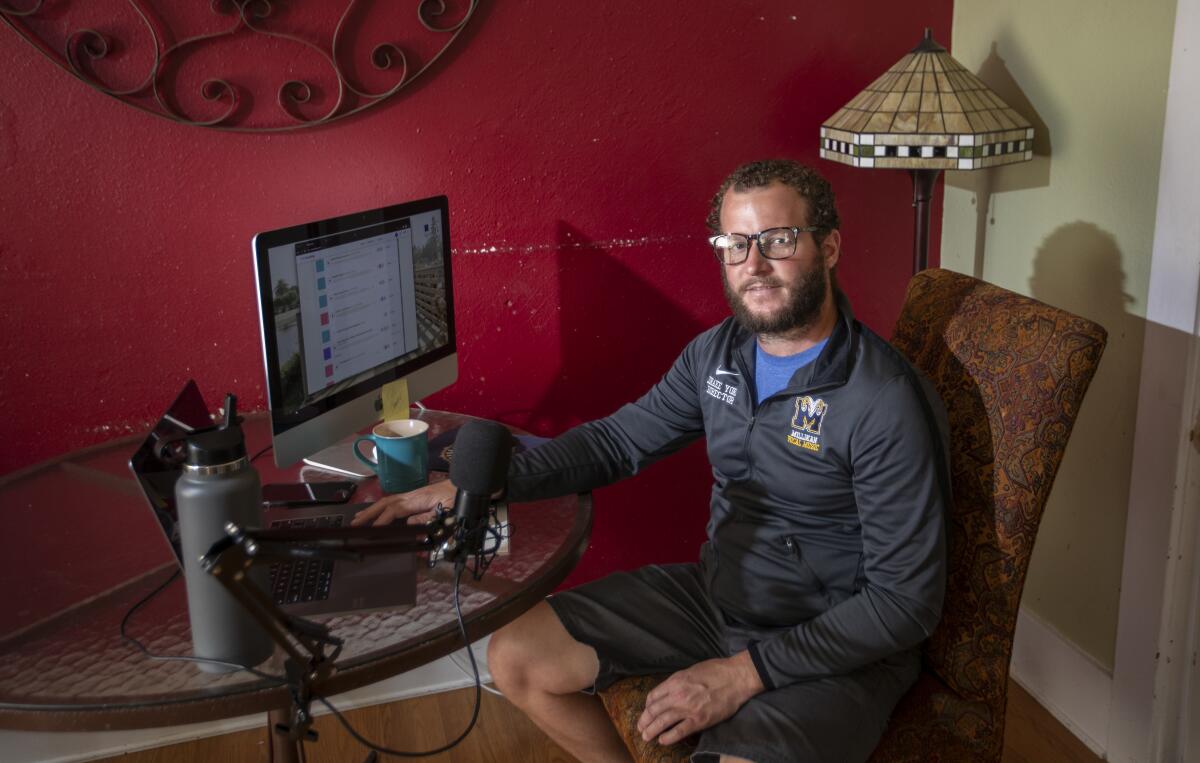
But the decision left Long Beach Millikan High School choir director Drake York unhappy. Internet lags and shoddy microphone recordings for a class dependent on synchrony and rhythm threw a wrench in the teaching methods he’s perfected in his 11 years as an educator.
“There’s a real pacing divide, and this is exacerbated with online learning. Kids who are successful accelerate and leave those who aren’t in the dust,” York said. “A lot of kids are taking on jobs or don’t have a great internet connection, and the district-provided Chromebooks are pretty slow and inconsistent.”
During his class, half the students kept their cameras turned off while others stared elsewhere. At the start of class, one student’s camera was upside down, then 90 degrees to the left for two minutes. It was just one small distraction in a schooling model full of them, he said.
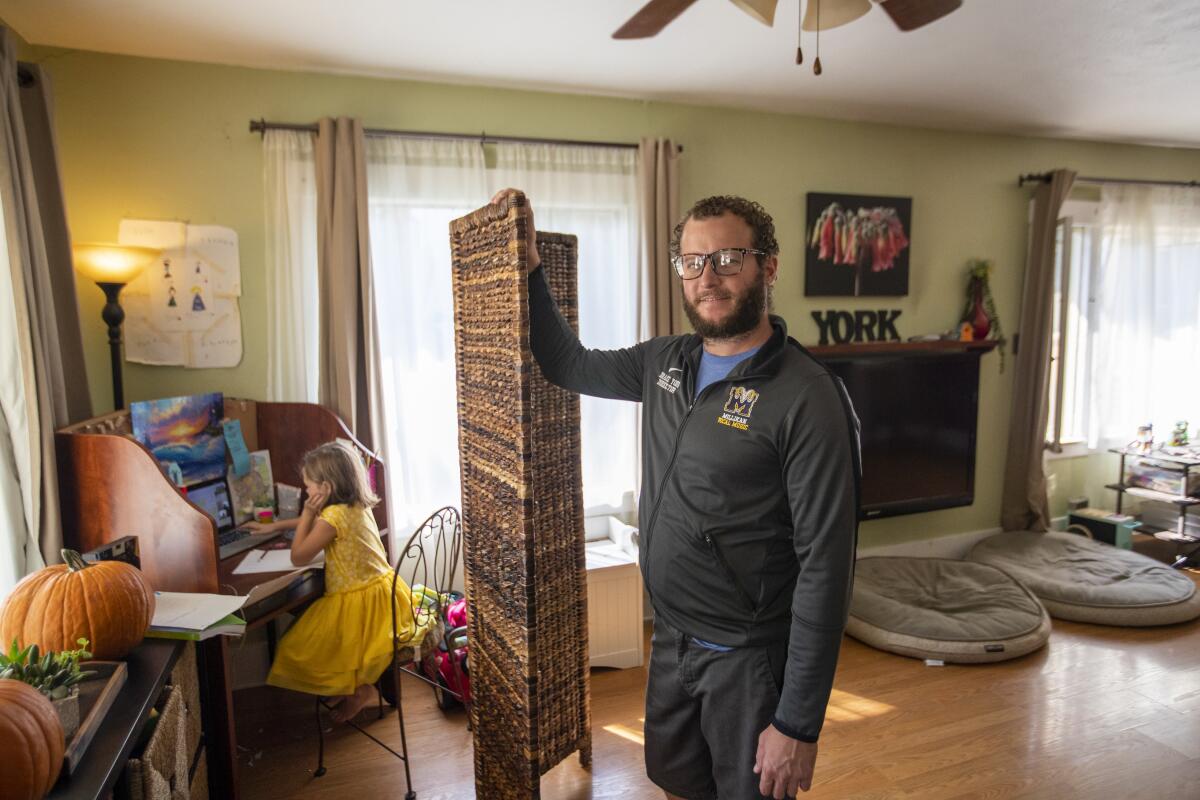
York said he tried his best to engage with the students for the first 40 minutes of class as he lectures on the foundations of music theory. He leads a lesson on rhythm using claps, encouraging others to join in. The remainder of class he provides time to work on assignments independently.
“I used to have over 300 students singing in one room. For them to be able to sing together and be able to socialize and grow together is what makes the class special,” York said.
This time of year, York’s class would be preparing for a retreat in the mountains near Yucaipa and their formal winter concert. Now, he is troubleshooting technology issues and trying to coordinate recording a virtual concert.
His job has become more time-consuming because of connectivity and technology problems, he said.
“The kids, myself and my colleagues are exhausted. We don’t know if this is going to be sustainable for a semester,” York said. “Were not even able to do tutoring or give valid assessment to the students on assignments with this time crunch.”
York said he hopes the district will look into accommodating choir practice outdoors as it does with other sports.
Los Alamitos High had a different concern: whether coming back to campus, even under a hybrid model, would lead to an increase in infections.
Just one week after reopening, on Oct. 6, interim Principal Greg Stone sent an email to Los Alamitos parents notifying them of the school’s first coronavirus case. Stone said thorough cleaning will be done in accordance with Orange County Health Care Agency guidelines.
Supt. Andrew Pulver said the district is creating a COVID dashboard to track cases across school sites and has begun contact tracing at the high school with the health agency.
Last week, high school teachers threatened to strike for safer work conditions but called off the vote because of logistical issues, said David Eisenberg, high school director of the Los Alamitos Educators Assn.
The science teacher said colleagues thought the Sept. 29 return date felt rushed. And though the strike did not occur, Eisenberg said the district has provided new safety guidelines to alleviate the concerns that teachers have expressed.
That includes more fresh air coming in through the air system, new air filters and stricter regulations on what qualifies as a mask, he said.
“We’re still scared about COVID, but we still love our students and we feed off their energy, and that’s something I think the district got right,” Eisenberg said.
Though many parents worry about sending their children back to school, others such as Christina Ynostrosa say the remote-learning experiment has caused tremendous strain. She burst into tears after a parent-teacher conference.
Ynostrosa, a sales and marketing director for a window film manufacturer, does not work from home, so she has to help her three sons — 9-year-old Aaron Villa, 17-year-old Elias Villa and 21-year-old Isaac Villa — get set up and hope they stay on task without her.
Elias, a student at Millikan High School, has attention deficit disorder and struggles to stay engaged.
“I know he struggled in class, but online is so much worse,” Ynostrosa said. “Not that it’s the teachers’ fault, but a child can slip through the cracks very easily.
“I feel like I’m letting my kids down by not being able to look over their schoolwork. I don’t downplay the virus, but I do feel like the district would be able to reopen and keep our kids safe.”
More to Read
Sign up for Essential California
The most important California stories and recommendations in your inbox every morning.
You may occasionally receive promotional content from the Los Angeles Times.

